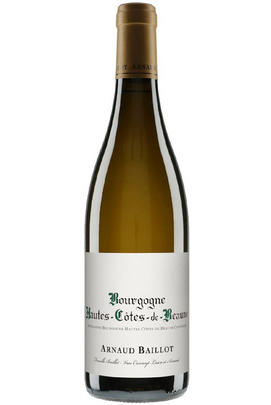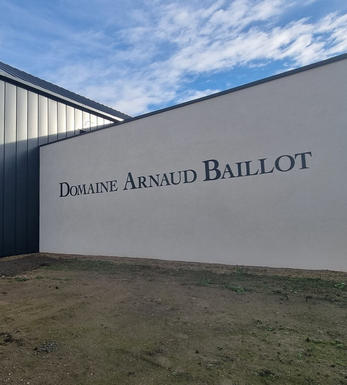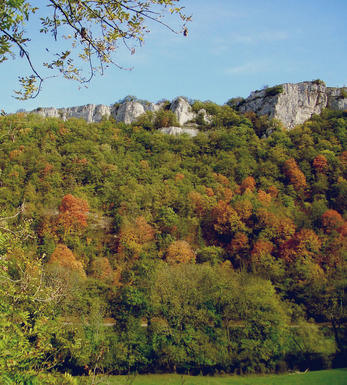
2021 Bourgogne Hautes-Côtes de Beaune Blanc, Arnaud Baillot

About this WINE

Arnaud Baillot
Domaine Arnaud Baillot is situated in the heart of the Côte d’Or, specifically in Beaune, a renowned wine-producing region in Burgundy. Arnaud Baillot and his wife Laure, the granddaughter of Domaine Hudelot-Noëllat in Chambolle-Musigny, share a deep passion for the diverse wines the Burgundy region offers.
Their collaboration has led to the creation of a remarkable range of village and premier cru Burgundy wines. Arnaud Baillot plays a hands-on role in every aspect of winemaking, from meticulously selecting the grape sources to overseeing the winemaking process and carefully choosing the type of barrels and ageing durations for each wine.
In 2017, the couple took a significant step by acquiring a small vineyard in the Côte de Beaune, marking the beginning of their venture into producing estate wines under the label Domaine Arnaud Baillot. Their winemaking philosophy revolves around respecting and showcasing the intricate terroirs of the Burgundy wine region, resulting in terroir-driven wines that truly exemplify the Burgundian character.
As they present their next vintage, it’s clear that Domaine Arnaud Baillot is committed to crafting limited-edition small-batch Burgundy crus, continuing to share their passion for and commitment to the complexity and uniqueness of the Burgundy wine region.

Côte de Beaune
With its three musketeers of Chassagne-Montrachet, Puligny-Montrachet and Meursault, alongside the imperial Corton-Charlemagne, the Côte de Beaune is home to the finest Chardonnays in the world. It hosts seven of Burgundy's eight white Grands Crus, along with a single red Grand Cru. Ironically though, much more red wine is made in this southern half of the Côte d'Or than white.
Stretching 30km south past the town of Beaune to Cheilly-lès-Maranges, the Côte de Beaune has a more expansive feel and gentler slopes than the Côte de Nuits. Its finest Chardonnays are characterised by an incomparable intensity and complexity, while its Pinot Noirs generally have softness and finesse as their calling cards. The best reds come from Beaune, Pommard and Volnay, and the powerful Grand Cru of Corton.
As in the Côte de Nuits, the fragmentation of the Côte de Beaune's vineyards brings the single biggest hurdle for any wine lover, namely the unpredictability of its wine. The human factor is paramount, and sadly too many lazy or unscrupulous growers and merchants have produced disappointing wines from some of the region's greatest names, while their more talented and quality-minded neighbours craft exquisite examples from the same terroir. Happily, quality is now higher than it has ever been here and organic and biodynamic methods are increasingly popular – especially amongst the younger generation.
Wines labeled `Beaune' come from the appellation adjoining the town while those labeled Côte de Beaune (red or white) emanate from a group of vineyards on the hill above. Côte de Beaune Villages is a red wine that can be made from a number of lesser, named villages in the region, while Hautes-Côtes de Beaune (mostly red) is produced from vineyards in the hills to the west of the appellation, divided in two by St Romain. These tend to be light yet often fine wines, especially in hot years like 2003 and 2005.

Chardonnay
Chardonnay is often seen as the king of white wine grapes and one of the most widely planted in the world It is suited to a wide variety of soils, though it excels in soils with a high limestone content as found in Champagne, Chablis, and the Côte D`Or.
Burgundy is Chardonnay's spiritual home and the best White Burgundies are dry, rich, honeyed wines with marvellous poise, elegance and balance. They are unquestionably the finest dry white wines in the world. Chardonnay plays a crucial role in the Champagne blend, providing structure and finesse, and is the sole grape in Blanc de Blancs.
It is quantitatively important in California and Australia, is widely planted in Chile and South Africa, and is the second most widely planted grape in New Zealand. In warm climates Chardonnay has a tendency to develop very high sugar levels during the final stages of ripening and this can occur at the expense of acidity. Late picking is a common problem and can result in blowsy and flabby wines that lack structure and definition.
Recently in the New World, we have seen a move towards more elegant, better- balanced and less oak-driven Chardonnays, and this is to be welcomed.


Buying options
Add to wishlist
Description
This wine has a delicate and fresh nose, with plenty of lemon and a hint of roasted hazelnut. The palate has a pleasing weight and texture, but continues to be refreshing. The lemony flavours are bolstered by a delicious touch of lemon curd and toasted breadcrumb. The finish is refined, with the result of a little skin contact lingering pleasantly on the teeth. Perfect as an aperitif, or with lighter chicken dishes.
Drink now
Victoria Bull, Junior Buyer, Berry Bros. & Rudd
wine at a glance
Delivery and quality guarantee